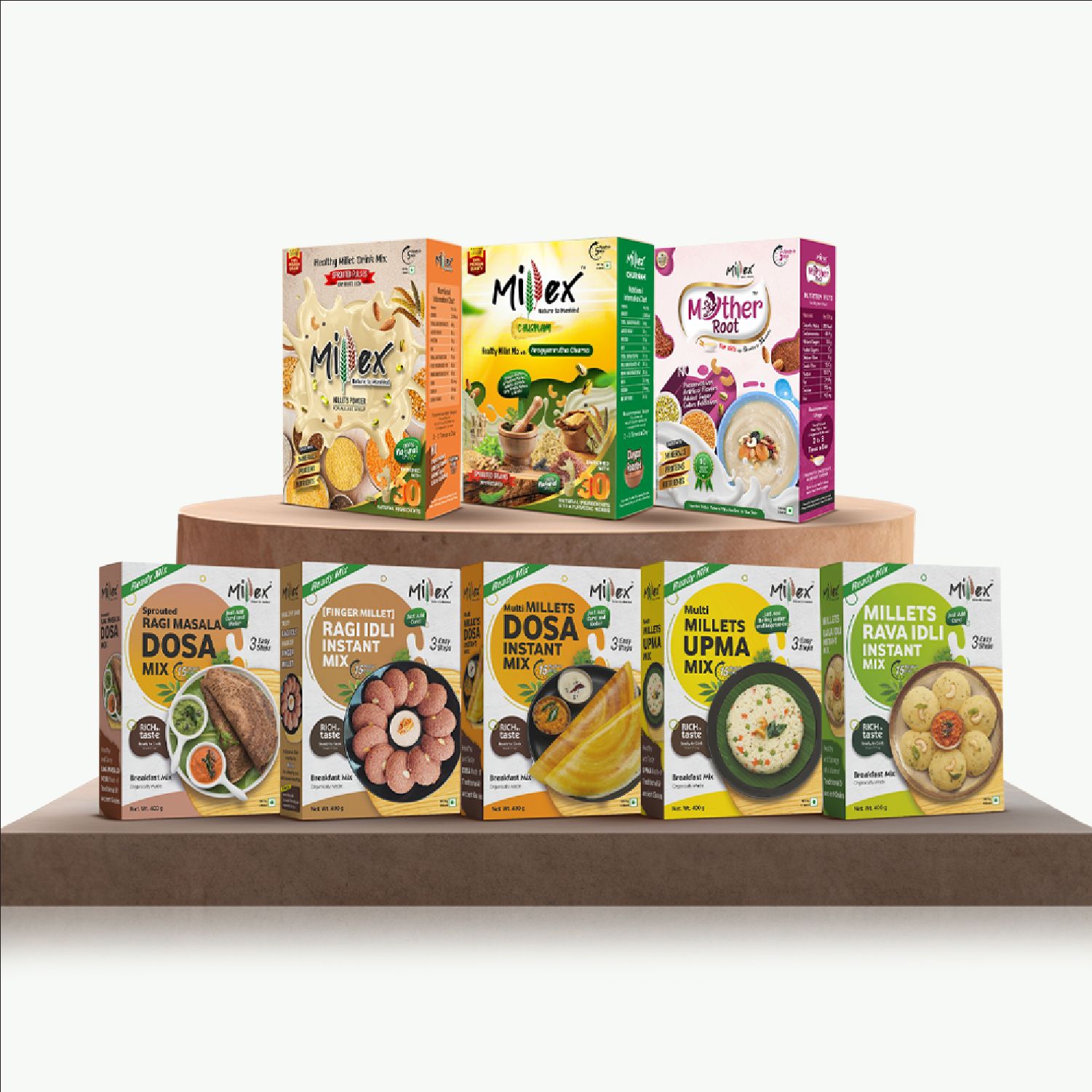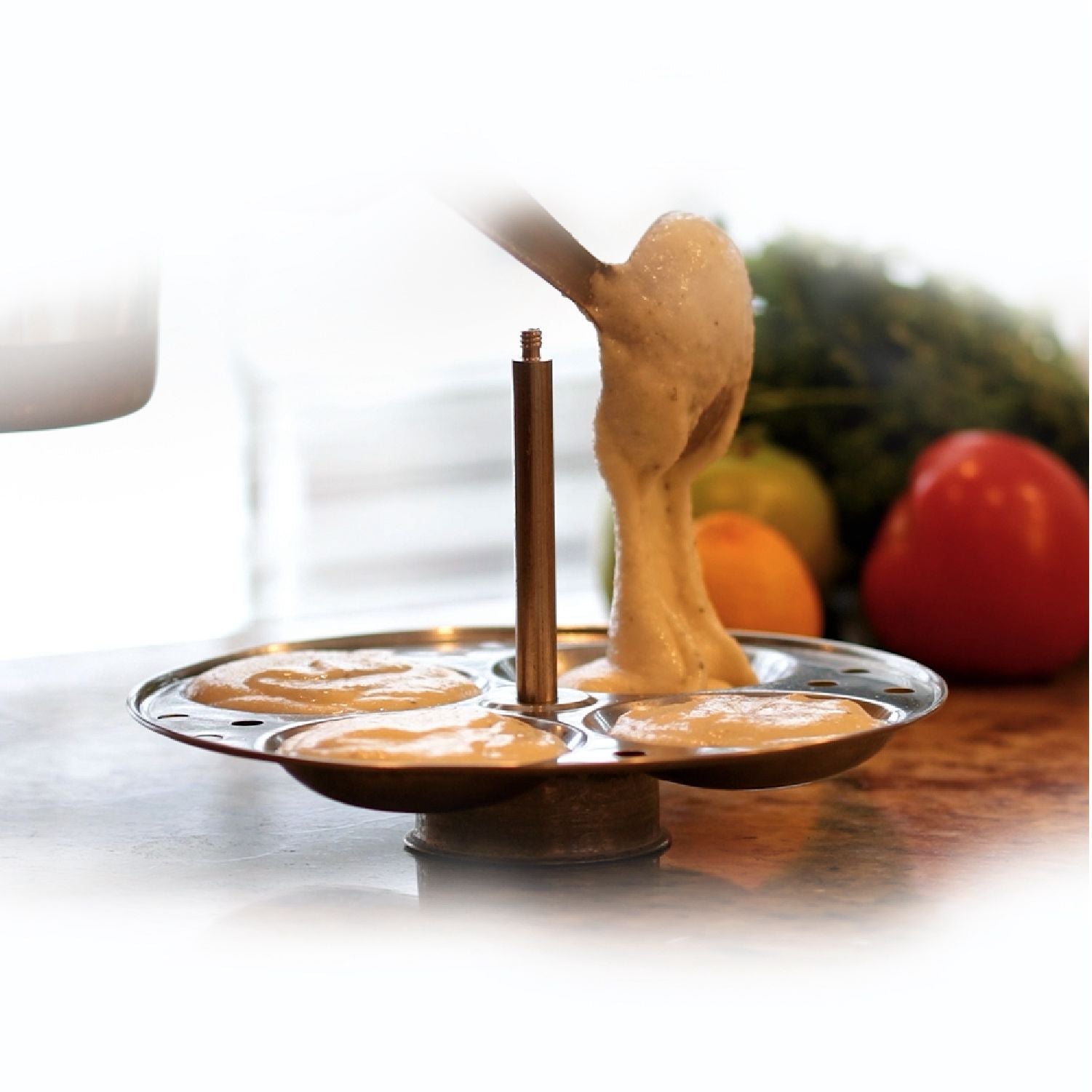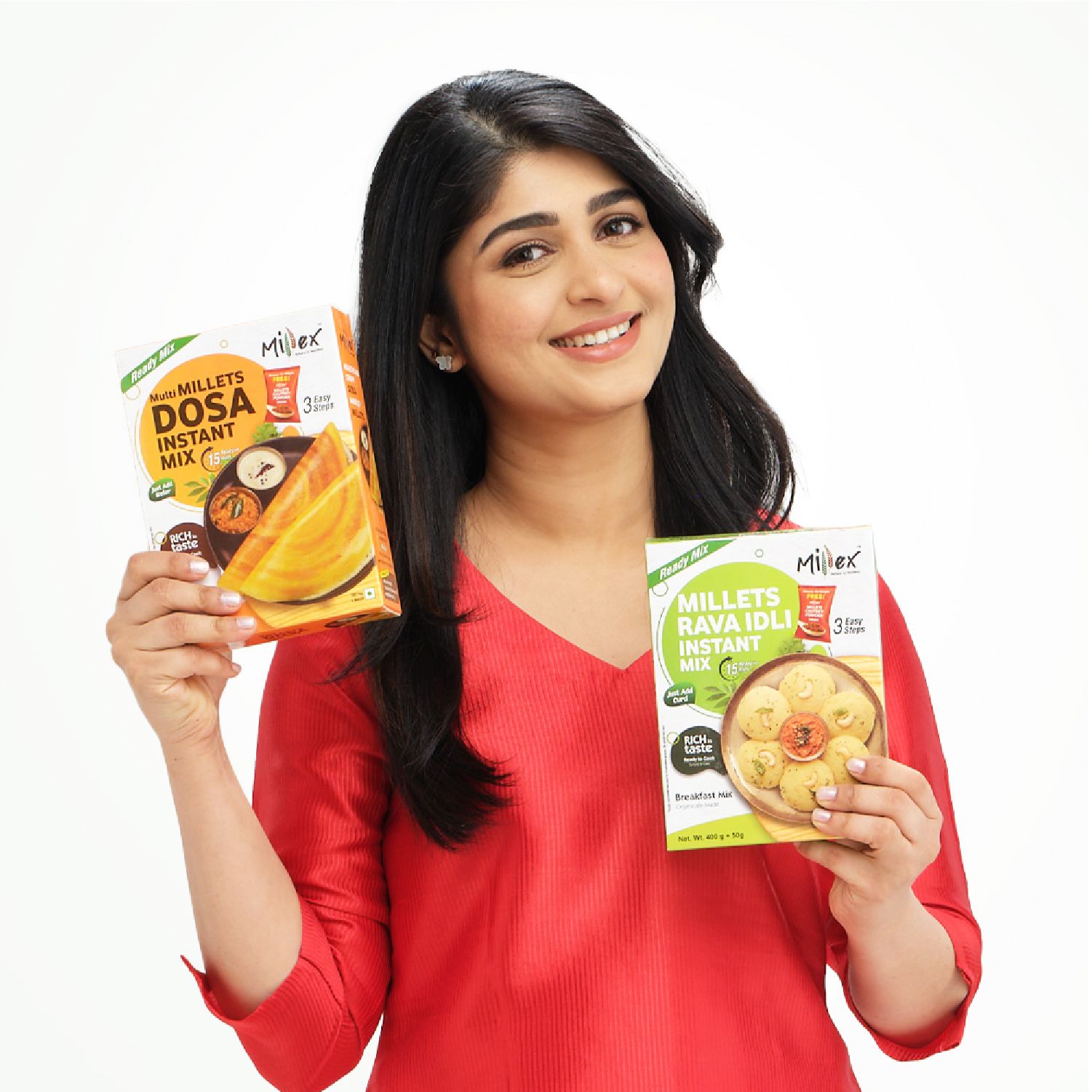Are you a diabetic person and looking for the best food for sugar management? If you answered yes, then no, look further and taking Millet is the best option.
Millet is an ancient cereal grain, has become more well-known due to its great nutritional value and potential for disease prevention.
A millet is a group of grasses with small seeds primarily farmed in Asia and Africa. It has been existed for thousands of years and able to withstand dry regions.
Taking Millex Nutritious Millet Mix will help you manage your diabetes and provide many other health benefits because it contains various healthy nutrients.
Small Millet, Kodo Millet, Barnyard Millet, Foxtail Millet, Proso Millet, Pearl Millet, Finger Millet, Browntop Millet, and Sorghum Millet are all included to make Millex Nutritious Millet Mix. Below, you can see how Millet transformed diabetic lives:
What are Millets?
A family of grasses with tiny seeds known as millets has been cultivated and eaten for thousands of years in many parts of the world. These grains have a high nutritional content and are abundant in fiber, protein, vitamins, and minerals.
Millets are an excellent choice for those with diabetes because they are low in glycemic index and gluten. One of the many health advantages of millets is that they can help decrease cholesterol and blood sugar levels. Those who have celiac disease or gluten sensitivity can also enjoy them because they are gluten-free.
Millet Nutrition
More necessary amino acids are present in millet than in most other cereals, which are high in calcium and protein. A list of nutrition available in millet:
- Vitamin A
- Vitamin B
- Phosphorus
- Potassium
- Antioxidants
- Niacin
- Iron
What causes diabetes?
Whatever the form, diabetes results from excess glucose in the blood. Increased blood glucose levels can impose multiple causes, though, depending on the type of diabetes you have. Diabetes has several causes, including:
Insulin Resistance: For the cause of 2 diabetes, this is the main reason. Numerous diseases and conditions, including genetics, obesity, inactivity, poor food, hormone imbalances, and some medications, can result in insulin resistance.
Autoimmune disease: When your immune system targets the insulin-producing cells in your pancreas, type 1 diabetes and LADA occur.
Hormonal Imbalances: Throughout pregnancy, the placenta releases hormones that cause insulin resistance. If your pancreas is unable to produce enough insulin to overcome insulin resistance, you may develop diabetes during pregnancy.
Acromegaly and cushing syndrome are two more hormone-related illnesses that may also include type 2 diabetes as a side effect.
Pancreatic Damage Type 3 Diabetes: It can arise from physical harm to the pancreas, such as conditions, surgeries, or injuries, impairing the organ's capacity to produce insulin.
Genetic Mutations: Certain genetic mutations have the potential to cause neonatal diabetes and MODY.
Long-term usage of some medications, such as corticosteroids and HIV/AIDS therapies, can also lead to type 2 diabetes.
Different Types of Millets to Know:
There are many types of Millets. Some of them are listed below:
Kodo Millet
A digestible variety of millet with a higher lecithin content is called Kodo Millet. It is the best Millet for diabetes and encourages the nervous system's growth. Niacin, folic acid, and vitamin B6 are more abundant in Kodo, along with other B vitamins and other vitamins and minerals.
Due to the fact that this millet is gluten-free, it is great for those who have a gluten sensitivity. It can address cardiovascular issues such as high blood pressure and cholesterol when postmenopausal women take it regularly. Additionally, it controls diabetic problems.
Barnyard Millet
Barnyard Millet is also known as kuthiraival or Sanwa. It is a fast-growing plant that is velvety to the touch and has a greenish colour. It is full of iron, calcium, and phosphorus, low in calories, and high in fiber, and it is a digestive champion. You can use barnyard millet powder every day to manage diabetics.
Little Millet
The small powerhouse known as kutki or samai, has a moderate flavor and a yellowish hue. Little millet is low in fat and contains zinc, magnesium, potassium, and protein. It also fights constipation, lowers cholesterol, and improves nerve function. The little millet has enormous advantages, highly helpful for controlling diabetics
Sorghum Millet
Sorghum millet is known as jowar, has a brownish color. Packed with antioxidants, iron, and fiber, it is the warrior that boosts digestion, reduces inflammation and lowers cancer risk. When used as popcorn or bhakri, this adaptable millet is the star of the show.
Foxtails Millet
Foxtails millet is known for its yellowish beauty, this is an ancient superstar, which dates back to 4000 BC and is also called kokum or kanji. Packed full of calcium, iron, and carbohydrates, this hidden gem helps maintain blood sugar levels, boost immunity, and prevent anemia. This millet gives your cooking skills some enthusiasm, whether you use it for dosas or oats.
Brown Top Millet
Brown top millet, sometimes called andu, has a brown appearance and is rare to find. It is high in thiamine, niacin, and riboflavin and low in glycemic index. It helps control blood pressure, diabetes, and skin health. For making dhosa to oats you can use brown top millet.
Buckwheat Millet
One of the most often consumed millet types is buckwheat, or kuttu. It lowers blood pressure and is appropriate for diabetics. It is good for your heart, and if you want to reduce weight, you should put it in your diet. Buckwheat also protects against breast cancer, gallstones, and childhood asthma.
Millets in Diabetes Management:
The low glycemic index, slow-release carbs, and high fiber content of these little, wildly popular, and nutrient-dense grains make them a great addition to any diabetic's diet. These provide steady energy without causing blood sugar levels to surge quickly while maintaining blood sugar levels.
To incorporate them into their diet as effectively as possible, it is always advised to follow dietary balance, portion management, and advice from medical professionals. Here are you can see the benefits of eating Millet for diabetic management:
Weight Management
Millets are low in calories and abundant in complex carbohydrates, which helps you feel fuller for longer. This helps you maintain a healthy body weight by reducing overeating and unnecessary snacking. Rich in nutrients, millets offer vital vitamins and minerals that enhance general health. Taking Millet mix powder daily, helps you to maintain your diabetics along with you can maintain your weight.
Minimal Glycemic Index
Due to their low glycemic index, Millets digest more slowly and do not raise blood sugar levels quickly. This is advantageous for those with diabetes since it keeps blood sugar levels steady and reduces spikes and crashes.
Controlling Cholesterol
Dietary fiber is abundant in millet, so it lowers cholesterol. It increases blood levels of harmful LDL cholesterol and has a naturally low saturated fat content. Millets include antioxidants that help shield LDL cholesterol from oxidative damage.
High Fiber Content
Fiber is your buddy when it comes to effectively managing your diabetes. Rich in dietary fiber, millet slows down the digestion and absorption of carbohydrates, allowing glucose to enter the bloodstream gradually. Taking millets provide general blood sugar regulation while reducing blood rise after meals.
Nutrient-Dense
Millet has more protein, fiber, vitamins, minerals, and other components vital for general health and wellness. Because it is low in fat and cholesterol, it is a beneficial supplement to a diabetic diet.
Lowering the Level of Oxidative Stress
Numerous chronic illnesses, such as diabetes, rheumatoid arthritis, and neurological disorders, can be brought on by oxidative stress. Antioxidants are crucial in lowering oxidative damage. Antioxidant-rich diets may offer defense against oxidative damage.
Antioxidants, abundant in Millet, may strengthen the body's defenses against oxidative stress, a contributing cause of disease and aging. They may also reduce the chance of developing chronic illnesses.
Builds healthy cells
Finger Millet contains abundant B vitamins, essential for normal cell division and brain function. Vitamin B9, or folate, is required for the production of healthy red blood cells.
Controls Blood Sugar
Due to their low glycemic index, millet can prevent blood sugar spikes after meals. Millets are a healthy whole grain, especially if you have type 2 diabetes since they include non-starchy polysaccharides, fiber, and undigestible carbohydrates that help manage blood sugar.
Gluten-Free
Millets are a fantastic gluten-free choice for people with diabetes who also have celiac disease or gluten intolerance.
Control Diabetics Level by Eating Amrith Noni, Millex Healthy Millet Mix
A classic blend of thirty different types of natural components, such as Millets, cereals, pulses, dry fruits, nuts, seeds, and spices, makes up Millex Healthy Millet Mix.
Additionally with eighteen important Ayurvedic herbs including shaktavari, Gokshura, Jeshtamadhu, Hippali, and ashwagandha, this healthiest drink is made.
In the pack of Millex Healthy Millet Mix antioxidants, fiber, vitamins, minerals, and proteins are all present in high amounts.





